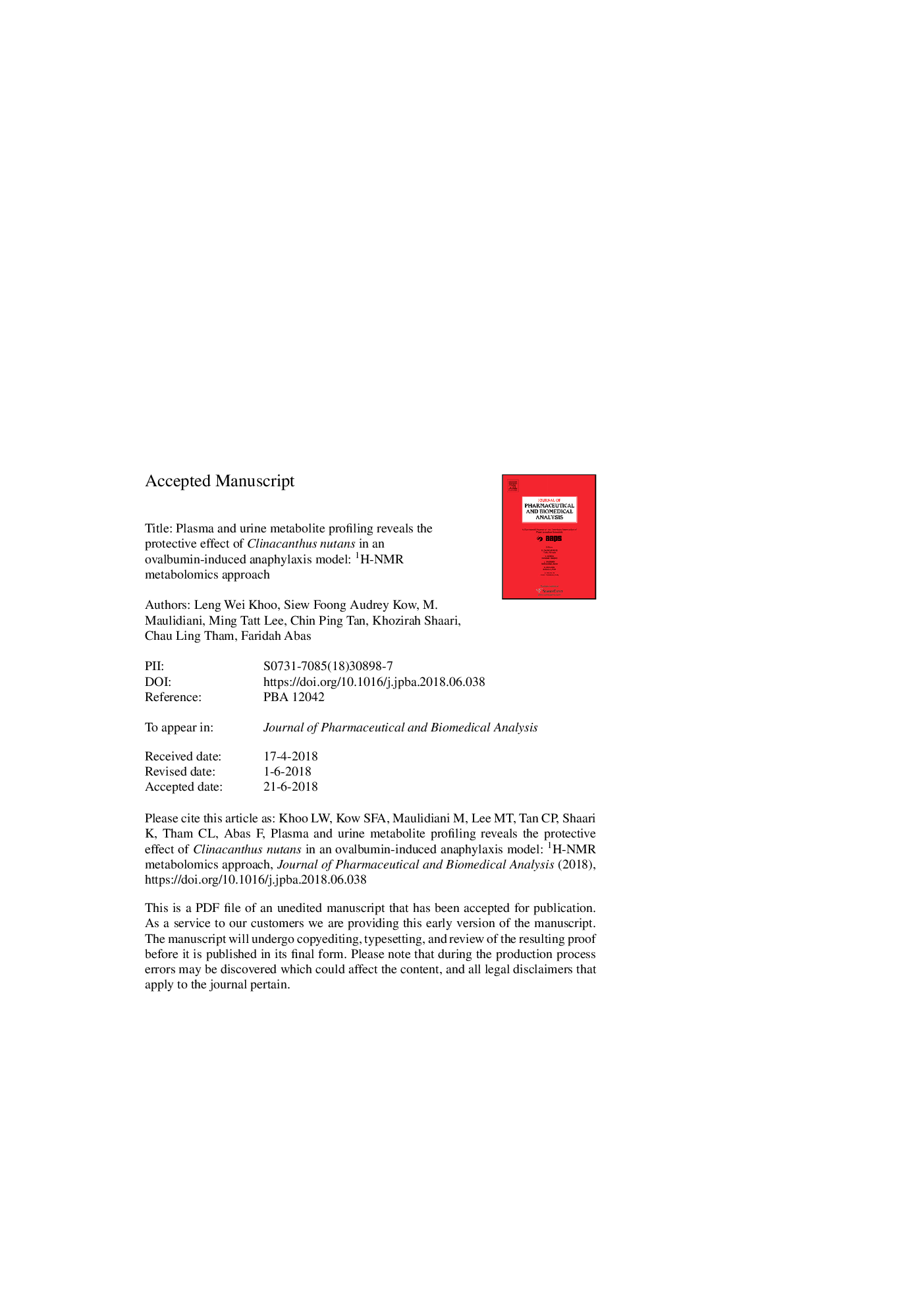| Article ID | Journal | Published Year | Pages | File Type |
|---|---|---|---|---|
| 7626136 | Journal of Pharmaceutical and Biomedical Analysis | 2018 | 39 Pages |
Abstract
The present study sought to identify the key biomarkers and pathways involved in the induction of allergic sensitization to ovalbumin and to elucidate the potential anti-anaphylaxis property of Clinacanthus nutans (Burm. f.) Lindau water leaf extract, a Southeast Asia herb in an in vivo ovalbumin-induced active systemic anaphylaxis model evaluated by 1H-NMR metabolomics. The results revealed that carbohydrate metabolism (glucose, myo-inositol, galactarate) and lipid metabolism (glycerol, choline, sn-glycero-3-phosphocholine) are the key requisites for the induction of anaphylaxis reaction. Sensitized rats treated with 2000â¯mg/kg bw C. nutans extract before ovalbumin challenge showed a positive correlation with the normal group and was negatively related to the induced group. Further 1H-NMR analysis in complement with Kyoto Encyclopedia of Genes and Genomes (KEGG) reveals the protective effect of C. nutans extract against ovalbumin-induced anaphylaxis through the down-regulation of lipid metabolism (choline, sn-glycero-3-phosphocholine), carbohydrate and signal transduction system (glucose, myo-inositol, galactarate) and up-regulation of citrate cycle intermediates (citrate, 2-oxoglutarate, succinate), propanoate metabolism (1,2-propanediol), amino acid metabolism (betaine, N,N-dimethylglycine, methylguanidine, valine) and nucleotide metabolism (malonate, allantoin). In summary, this study reports for the first time, C. nutans water extract is a potential anti-anaphylactic agent and 1H-NMR metabolomics is a great alternative analytical tool to explicate the mechanism of action of anaphylaxis.
Keywords
Related Topics
Physical Sciences and Engineering
Chemistry
Analytical Chemistry
Authors
Leng Wei Khoo, Siew Foong Audrey Kow, M. Maulidiani, Ming Tatt Lee, Chin Ping Tan, Khozirah Shaari, Chau Ling Tham, Faridah Abas,
